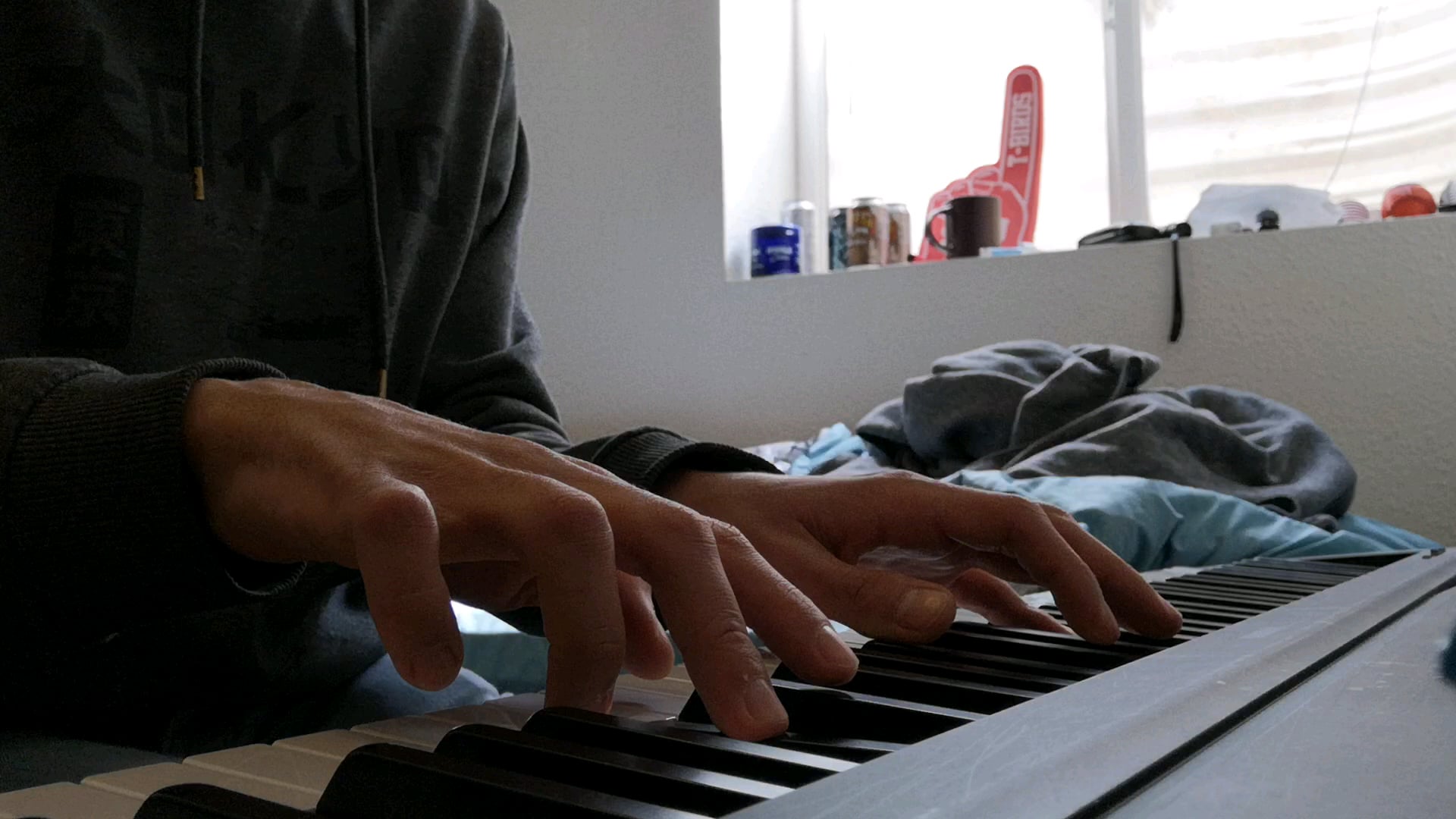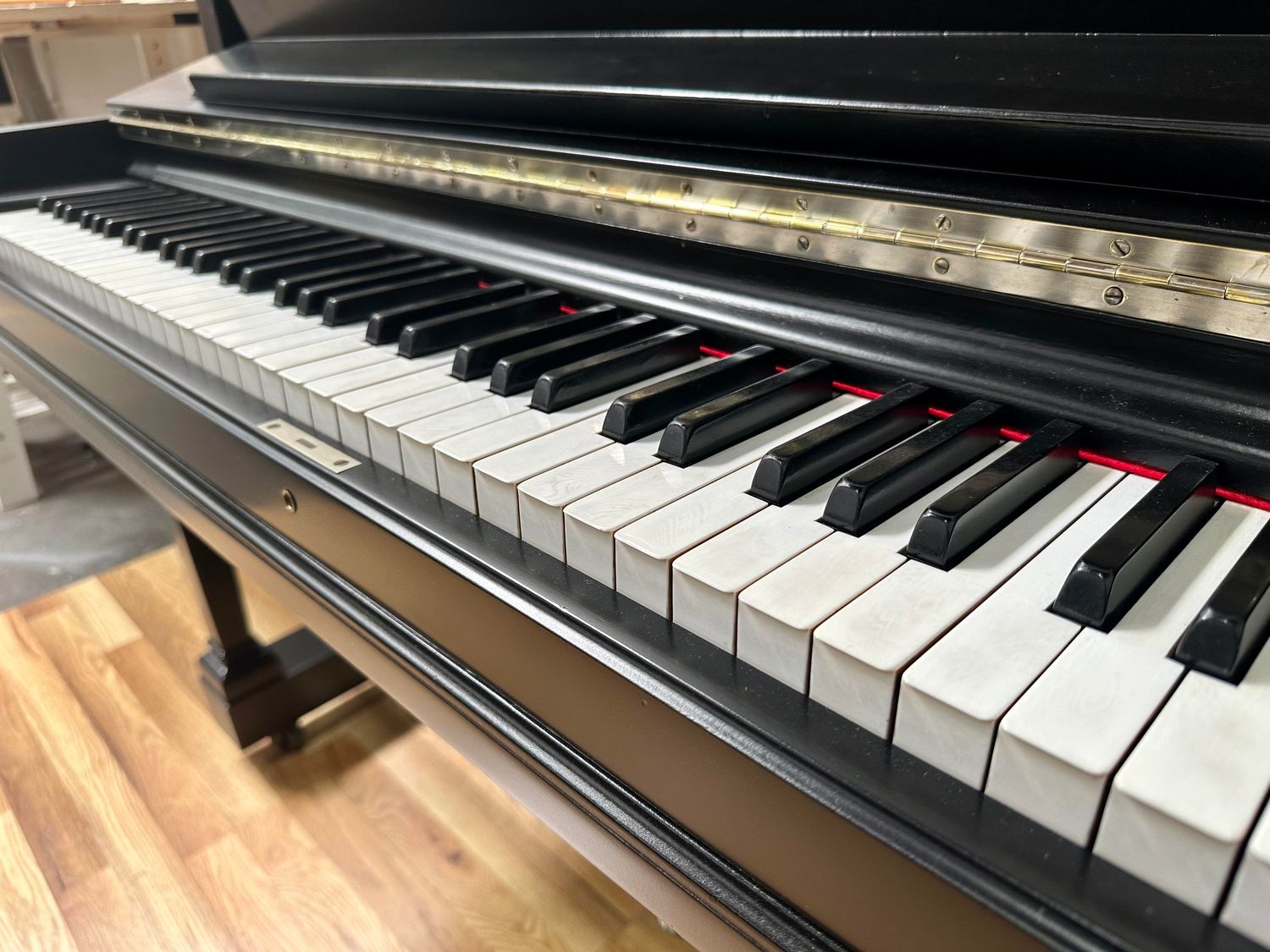Home>Instruments>Piano>How To Play Scales Piano


Piano
How To Play Scales Piano
Published: February 11, 2024
Learn how to play scales on the piano with our step-by-step guide. Master the piano and improve your skills with our expert tips and techniques. Discover the joy of playing piano scales today!
(Many of the links in this article redirect to a specific reviewed product. Your purchase of these products through affiliate links helps to generate commission for AudioLover.com, at no extra cost. Learn more)
Table of Contents
- Unlocking the Magic of Piano Scales
- Decoding the Essence of Piano Scales
- Mastering the Foundations of Finger Placement
- Unveiling the Splendor of Major Scales on the Piano
- Exploring the Evocative Depths of Minor Scales on the Piano
- Elevating Your Piano Scale Practice Regimen
- Harmonizing Mastery and Musical Expression
Introduction
Unlocking the Magic of Piano Scales
Welcome to the enchanting world of piano playing! Whether you're a budding musician or a seasoned player, mastering piano scales is an essential aspect of honing your skills. Scales form the foundation of music theory and are fundamental to understanding harmony, melody, and rhythm. In this comprehensive guide, we will delve into the art of playing piano scales, exploring everything from basic finger positions to the intricate nuances of major and minor scales.
As you embark on this musical journey, you'll discover that scales are not just a series of monotonous exercises; they are the building blocks of captivating melodies and harmonious compositions. By grasping the intricacies of scales, you'll gain a deeper understanding of music and develop the dexterity and agility required to express yourself fluently on the piano.
Throughout this guide, we'll unravel the mysteries of scales, providing you with valuable insights and practical tips to elevate your piano playing prowess. Whether you're aiming to dazzle audiences with virtuosic performances or simply seeking the joy of creating beautiful music, mastering piano scales is an indispensable step on your musical odyssey.
So, without further ado, let's embark on this melodious expedition and unravel the secrets of piano scales, unlocking a world of musical possibilities at your fingertips.
Understanding Scales
Decoding the Essence of Piano Scales
Before delving into the intricate art of playing piano scales, it’s crucial to grasp the essence of scales themselves. In music theory, a scale is a sequence of notes arranged in ascending or descending order, with a specific pattern of intervals between each note. These intervals create the unique sound and character of a scale, giving rise to the diverse tonalities that enrich musical compositions.
One of the most prevalent scales in Western music is the diatonic scale, which consists of seven distinct notes within an octave. The most familiar example of the diatonic scale is the major scale, renowned for its uplifting and jubilant sound. Understanding the structure of the major scale, with its sequence of whole and half steps, forms the cornerstone of comprehending scales in general.
Furthermore, the concept of relative minor scales, which share the same key signatures as their corresponding major scales, adds a layer of depth to the understanding of scales. The harmonic and melodic minor scales introduce captivating variations, infusing compositions with emotive nuances and evocative melodies.
As you unravel the intricacies of scales, you’ll encounter diverse types such as pentatonic, blues, and chromatic scales, each contributing a distinct flavor to musical arrangements. Embracing the rich tapestry of scales empowers pianists to explore a myriad of musical genres, from classical and jazz to contemporary pop and beyond.
By comprehending the essence of scales, pianists gain a profound insight into the language of music, enabling them to interpret and express musical pieces with depth and authenticity. The journey of mastering piano scales begins with unraveling the fundamental principles that underpin these melodic frameworks, laying the groundwork for a harmonious and melodious expedition into the realm of piano playing.
Basic Finger Positions
Mastering the Foundations of Finger Placement
As you embark on your piano journey, mastering the fundamental finger positions is paramount to developing a strong and agile technique. Proper finger placement not only facilitates fluid and effortless playing but also minimizes the risk of strain and injury, allowing for sustained practice and performance.
One of the fundamental principles of piano finger positioning is maintaining a relaxed and natural hand posture. When placing your hands on the keyboard, ensure that your fingers are gently curved, allowing them to exert precise control over the keys while promoting flexibility and dexterity. The fingertips should make contact with the keys, striking a balance between firmness and suppleness to produce a resonant and well-articulated sound.
Understanding the numbering system for fingers is essential in navigating the keyboard with ease. The thumb is labeled as “1,” followed by the index finger as “2,” the middle finger as “3,” the ring finger as “4,” and the little finger as “5.” This numbering scheme forms the basis for learning and executing various piano exercises and pieces, enabling efficient communication of finger placements and movements.
Moreover, familiarizing yourself with hand positions such as the C position and G position lays a solid groundwork for navigating scales and arpeggios across the keyboard. These foundational hand positions serve as launching pads for exploring a wide array of musical passages and developing a comprehensive understanding of piano repertoire.
By honing your mastery of basic finger positions, you’ll cultivate a strong technical foundation, empowering you to tackle increasingly complex musical pieces with confidence and proficiency. Embrace the art of finger placement as a gateway to unlocking the full potential of your piano playing, paving the way for a harmonious and melodious journey through the captivating realm of music.
Playing Major Scales
Unveiling the Splendor of Major Scales on the Piano
Major scales form the bedrock of melodic structure in music, exuding a sense of brightness and exuberance that captivates listeners. Mastering major scales on the piano not only enhances technical proficiency but also fosters a deeper understanding of tonal relationships and harmonic progressions.
To embark on the journey of playing major scales, it’s imperative to comprehend the foundational pattern of whole and half steps that defines the unique character of each scale. For instance, the C major scale, which serves as a pivotal starting point for many pianists, follows a sequence of whole step, whole step, half step, whole step, whole step, whole step, and half step, ascending through the notes C, D, E, F, G, A, and B within an octave.
Adopting the appropriate fingerings for major scales is instrumental in executing them with precision and fluency. Embracing the concept of thumb tucks and crossovers facilitates seamless traversal of the keyboard, enabling pianists to navigate the ascending and descending patterns of major scales with grace and agility.
Furthermore, understanding the harmonic structure of major scales equips pianists with the proficiency to construct chords and arpeggios harmonically linked to each scale. This harmonic insight not only enriches the interpretation of musical compositions but also fosters compositional creativity, empowering pianists to craft their own melodic tapestries with confidence and ingenuity.
Embracing the art of playing major scales opens a gateway to a myriad of musical possibilities, from classical masterpieces to contemporary compositions. As you delve into the enchanting realm of major scales, you’ll unravel the intrinsic beauty of tonal relationships and harmonic sequences, expanding your musical horizons and infusing your piano performances with a resplendent brilliance that captivates audiences.
With diligence and dedication, mastering major scales becomes a transformative journey, elevating your piano playing to new heights and imbuing your musical expression with a luminous vitality that resonates deeply with listeners.
Playing Minor Scales
Exploring the Evocative Depths of Minor Scales on the Piano
Minor scales evoke a sense of emotive depth and introspection, adding a poignant allure to musical compositions. Delving into the realm of minor scales on the piano unveils a rich tapestry of tonalities, fostering a nuanced and expressive approach to musical interpretation.
Understanding the distinct patterns of whole and half steps that define minor scales is essential in navigating their evocative terrain. For instance, the natural minor scale follows a sequence of whole step, half step, whole step, whole step, half step, whole step, and whole step, ascending through the notes A, B, C, D, E, F, and G within an octave. This pattern imbues minor scales with a melancholic and introspective quality, inviting pianists to imbue their performances with poignant sentiment and emotional resonance.
Embracing the melodic and harmonic variations of minor scales, such as the harmonic and melodic minor scales, adds a layer of complexity and allure to the pianist’s repertoire. The harmonic minor scale, characterized by its raised seventh degree, infuses compositions with a sense of tension and drama, while the melodic minor scale, with its distinct ascending and descending patterns, offers a versatile palette for expressive musical phrasing.
Mastering the fingerings and hand positions tailored to minor scales empowers pianists to traverse the keyboard with finesse and sensitivity, capturing the essence of minor tonalities with authenticity and grace. By internalizing the unique characteristics of minor scales, pianists unlock a world of expressive possibilities, from soul-stirring classical compositions to contemporary pieces imbued with emotive depth.
As you immerse yourself in the captivating realm of minor scales, you’ll discover a profound reservoir of musical expression, enabling you to convey a spectrum of emotions through your piano performances. Embrace the evocative depths of minor scales as a gateway to infusing your musical narrative with poignant beauty and introspective allure, captivating audiences with the heartfelt resonance of your artistry.
Practice Tips
Elevating Your Piano Scale Practice Regimen
Embarking on a journey to master piano scales necessitates a disciplined and focused approach to practice. By integrating effective practice tips into your routine, you can enhance your technical prowess and musical fluency, unlocking the full potential of your piano playing.
- Consistent Repetition: Incorporate regular scale practice into your daily routine, dedicating focused sessions to different scales and variations. Consistent repetition fosters muscle memory and reinforces your command over diverse tonalities.
- Metronome Mastery: Utilize a metronome to maintain steady tempo and rhythm during scale practice. Gradually increase the tempo as your proficiency grows, cultivating a precise and controlled execution of scales.
- Varying Articulation: Experiment with diverse articulations, including staccato, legato, and varied dynamics, to imbue your scale practice with expressive nuances. This fosters adaptability and sensitivity in your playing.
- Hand Independence Exercises: Integrate exercises that enhance hand independence and coordination, such as practicing scales in contrary motion or utilizing Hanon finger exercises. Strengthening hand independence bolsters your overall technical dexterity.
- Reflective Listening: Engage in reflective listening to exemplary performances of scales by renowned pianists. Analyze their phrasing, dynamics, and tonal control, drawing inspiration to refine your own interpretations.
- Integrating Scales into Repertoire: Seamlessly integrate scale passages into the pieces you are learning, bridging the gap between technical exercises and musical application. This integration enhances your ability to navigate scales within diverse musical contexts.
- Mental Practice: Embrace mental practice by visualizing the patterns and fingerings of scales away from the keyboard. Mental rehearsal reinforces memory and fosters a deeper understanding of scale structures.
- Patience and Persistence: Approach scale practice with patience and persistence, recognizing that mastery is a gradual journey. Celebrate incremental progress and remain dedicated to continual improvement.
By incorporating these practice tips into your daily regimen, you’ll cultivate a holistic and effective approach to mastering piano scales. Embrace each practice session as an opportunity for growth and refinement, nurturing your musical fluency and technical acumen with each melodic ascent and descent across the keyboard.
Conclusion
Harmonizing Mastery and Musical Expression
As we draw the curtains on this melodious expedition through the realm of piano scales, it’s evident that scales are not mere technical exercises but profound gateways to musical expression and fluency. The journey of mastering piano scales transcends the realm of mechanical dexterity, inviting pianists to imbue their performances with emotive depth, tonal richness, and harmonic sophistication.
By unraveling the essence of major and minor scales, embracing the nuances of finger positions, and integrating effective practice strategies, pianists embark on a transformative odyssey toward technical mastery and artistic eloquence. The interplay of disciplined practice and creative interpretation converges to elevate piano scale playing into a captivating art form, resonating with audiences and invigorating musical narratives with vibrant energy.
Furthermore, the proficiency gained from mastering scales extends beyond technical proficiency, permeating every facet of a pianist’s musical journey. The insights gleaned from scales infuse compositions with structural integrity, melodic eloquence, and harmonic resonance, shaping the very essence of musical storytelling.
As you continue your musical voyage, remember that each scale traversed on the keyboard is a brushstroke in the canvas of a larger musical tapestry. Embrace the journey with unwavering dedication, allowing the enchanting melodies and harmonies to unfold beneath your fingertips, weaving a narrative that transcends the confines of notation and technique.
Ultimately, the mastery of piano scales empowers pianists to articulate their musical visions with clarity and conviction, fostering a profound connection with their audience and breathing life into each musical phrase with resplendent vitality. Let the echoes of scales reverberate through your musical endeavors, infusing your performances with a luminous brilliance that captivates hearts and kindles the flames of musical passion.
So, as you embrace the enchanting odyssey of piano scales, remember that each ascent and descent across the keyboard is a testament to your unwavering commitment to the art of musical expression. May your piano scales resound with the timeless echoes of creativity and artistry, enriching the world with the transcendent language of music.











